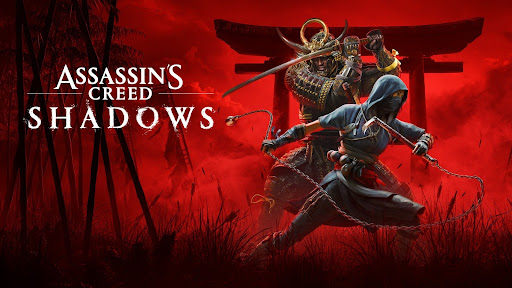‘Final Fantasy VII’ Part 2 – A Supernova of an Impact

Photo from PC Invasion
Welcome back to the second part of my narrative criticism of “Final Fantasy VII.” Part one, which you can find here, consisted of using rhetorical strategies in an attempt to find the objective that the narrative was attempting to accomplish. Having found that objective (articulating a message to the player surrounding trust), now it’s time to understand what features of the narrative complete said objective. If you haven’t done so already, please familiarize yourself with the first part of this analysis to alleviate any confusion that might arise.
Knowing that the objective of “Final Fantasy VII” is to send a message to the player, the next step in a narrative criticism is to understand how the narrative completes the objective and successfully communicates the message. The trust that Cloud’s party bestowed upon him is what allowed him to regain his true self. For the player, it takes the veil off of the world, and we finally get to see the world for what it truly is. In the final dungeon of the game, we finally get to experience Cloud’s trust in his teammates. Apart from when he was poisoned, Cloud had always been fighting on the frontline.
When two paths present themselves, the team must split up to tackle them both. This is where Cloud has to trust his team to take care of themselves. It bleeds into the final battle, where the entire team faces off against Sephiroth; Cloud refers to the team’s memories and hopes as “our” rather than “mine,” as he does early in the game. What really takes the cake though is when Cloud sacrifices himself to stop Sephiroth for good. After he finally stops Sephiroth, he is stuck as the crater implodes. Suddenly, a hand reaches out and helps pull him back to escape the crater, which is none other than Aerith’s hand. Because Cloud trusted Aerith and opened his heart to her, she was able to return, if only for a brief moment, to help Cloud. This trust in Aerith is reciprocated, as Cloud takes her hand, and eventually Tifa’s hand, to escape the crater. This is trust that can be passed onto the player, considering the time that they’ve spent together with Cloud.
The direct link between character and player is how “Final Fantasy VII’s” message becomes obvious. Back when the player looks into Cloud’s mind, the character disruptions cause the player to focus more on Cloud and everything that has led to that moment. When both Cloud and the player hit clarity at the same time, immersion is at its highest. It cements that Cloud and the player are one and the same. Rachael Hutchinson, who wrote a chapter specifically on “Final Fantasy VII” and its connection to the audience, claims that this forces the player to consider the game world in conjunction with reality. Just like Cloud and his party, the player must face their issues, not just sit back and let things happen.
This is the message that the game imparts on its player. The player was able to trust themself and their friends in the game; now it’s time to do the same in the real world. This message of trusting those who trust you is meant to positively change the player’s life, just as it did for Cloud. It can give the player the strength they need to tackle a personal problem or save relationships that may seem doomed. This valuable life lesson will remain with the player so long as they remember their time as Cloud Strife in the world of “Final Fantasy VII.”
The idea of identification comes into play here, as it shows us how the developers of the game rhetorically made it so that the message would reach the player and affect their life. Because Cloud and the player are one, any language meant for Cloud is meant for the player. The developers could get on the same page as the player and communicate with them directly through Cloud. Much of this comes in the final confrontation with Sephiroth, as Cloud rallies his allies to save the world. This rallying is the developer’s way of also rallying the player to make a positive impact in their life. Hence, the developer is using identification to talk to the player using Cloud’s words. Since this is also a rallying cry for Cloud himself, the identification with the player becomes even more personal, almost like the player is rallying themself in the real world. With this, the message is communicated, and the objective, along with the narrative criticism, is complete. However, the message can even be communicated beyond the player.
This goes further, as it impacts the lives of those who may not have experienced “Final Fantasy VII” as a player. Even the characters who have interacted with Cloud see improvements in their lives because of his learning to trust himself and others. As this transfers to the player as well, the real people in the player’s life may see improvements as well. Cloud’s ability to move past his trauma opened the door for other characters to move past their own, and follow in his footsteps. If a player learns to trust the people in their lives, others may follow suit. It’s something that can have a positive effect on a wide variety of people, therefore making “Final Fantasy VII” a game that has the ability to reach people who may have never even heard of it. Additionally, this game and its message caused people to realize that video games could be used as a therapeutic and teaching tool.
Herrick says, “we are drawn to narrative because of an innate story-telling quality within us.” This idea of story-telling is further backed up by Boyd, who says that narratives and stories allow us to share experiences with each other and pass them along. What this means is that we are drawn to stories like “Final Fantasy VII” because of our nature as people. We derive a message from it, and then pass that message along because of our need to share our experiences with a narrative. Thus, more people can be affected by “Final Fantasy VII’s” message, which is that of trust and facing your demons.
With the message of “Final Fantasy VII,” the gaming industry changed as a whole. I mentioned earlier how the game caused people to realize that video games could be used as a tool for therapy and other helpful treatments. This idea sparked the gaming industry to begin fleshing out characters and stories in an attempt to follow in the footsteps of “Final Fantasy VII.” A journalist named Kofi Amankwaa Jr. looks at the characterization of the game and comes to the conclusion that “Final Fantasy VII” began to break away from the same game mechanics we knew. Not only did it start to integrate story with gameplay, but since then, a lot of RPGs, and games as a whole, took cues from Final Fantasy and began doing the same thing.
This is largely thanks to the rhetoric of the narrative, specifically identification again. If “Final Fantasy VII” was able to communicate using player-character identification effectively, other games could do the same. Today, video games have become a staple part of life. Many games offer deep and complex stories in an attempt to cause a reaction from their audience. Game priority over story and character was largely due in part to the success of “Final Fantasy VII.”
A game like “Final Fantasy VII” did a lot for the video game industry as a whole. By using narrative criticism, the objective of the game became clear: to send a message to the player. That message was communicated by using player-character identification and by using plot and pathos. The message goes even further by expanding onto those who may not have directly interacted with the game. These were things that were new to video games at the time, and “Final Fantasy VII” was the first to make it stick. In fact, gaming itself was fairly new, considering that the Nintendo Entertainment System (NES) was released only 12 years prior to the release of “Final Fantasy VII.” It brought something to the forefront of modern gaming: teach the player a valuable lesson through video games.
The legacy that the game left behind is immense. Aidan Moher, who wrote an entire book that outlined how video games rose into such a prominent part of our society, has this to say about “Final Fantasy VII”: “It brought change to the JRPG genre and the video game medium by altering our understanding of the types of stories video games could tell — and the ways in which they could tell those stories.” This extends to the messages that video games can convey and the lessons they can teach us. The gaming industry as a whole owes a lot to “Final Fantasy VII” as gaming and society would look very different if it never succeeded the way it did. Narratives are made for humans to interact with them, and “Final Fantasy VII” brings that interaction to an entirely new level with its brilliant storytelling and characters.






